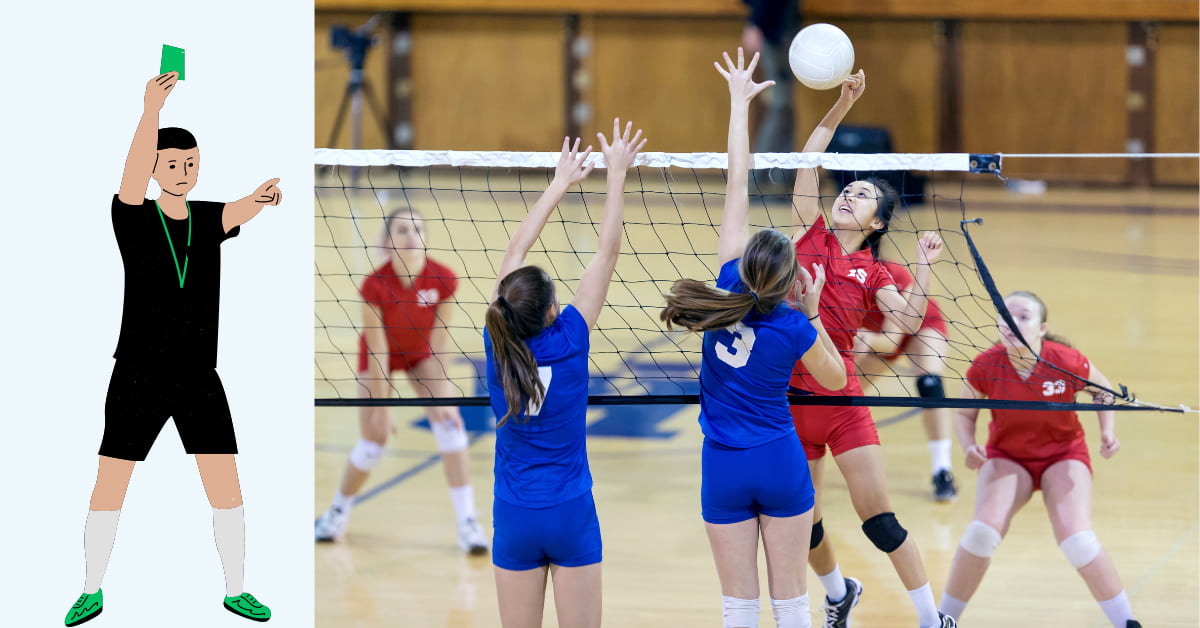What is a Green Card in Volleyball (Rules, Impact, & Differentiation)
New rules have been added to international volleyball competitions – the green card. While yellow and red cards are most commonly known for penalizing players for misconduct, the green card is intended to address specific situations on the court.
In this article, we will delve into the concept of the green card, its rules, the impact it has on the players and the team, and how it differs from other cards used in the sport.
What is a Green Card in Volleyball?
Green cards are relatively new additions to volleyball rules. It was introduced during international competitions to foster a spirit of sportsmanship and honesty. Whenever a player admits to making a block touch or a net touch, the referee issues a green card.
In contrast to yellow and red cards, which are punitive, the green card acknowledges a player’s self-reported fault without imposing immediate consequences.

Green Card Rules
The green card is typically shown by the referee in response to a player’s honest admission of their fault. A green card can only be issued if the player voluntarily admits to the block touch or net touch.
If a player denies the fault or the referee believes that the fault was intentional, the green card will not be given, and regular rules for yellow and red cards will apply.
Impact of Receiving a Green Card
It is possible for those who plead guilty to receive green cards. This showcases a player’s integrity and sportsmanship, sending a positive message to both teams and spectators.
As a result, players can use it as a learning experience to reflect on their actions and avoid making similar mistakes in the future.

Differentiating Green Card from Other Cards
It is essential to understand how the green card differs from other cards commonly used in volleyball.
Yellow cards are given to players for unsportsmanlike conduct or repeated minor infractions, and they come with consequences such as a point deduction or temporary exclusion from the game.
Red cards, on the other hand, signify serious offenses, leading to a player’s expulsion from the match.
Conclusion
In international volleyball competitions, the green card marks a progressive step forward. Players are encouraged to admit their faults honestly, promoting fair play and integrity.
In contrast to yellow and red cards, which penalize players, the green card recognizes and values sportsmanship. This new addition to volleyball is likely to improve overall sportsmanship and foster a deeper sense of respect among players and teams.
Frequently Asked Questions
How does a Green Card affect the team’s score?
Unlike the yellow and red cards, the Green Card does not have a direct impact on the team’s score. It is more of a cautionary measure to encourage ethical conduct.
How does a Green Card differ from a Yellow Card?
The Green Card is different from the Yellow Card as it focuses on sportsmanship rather than penalizing misconduct. It is shown when a player admits to a block touch or a net touch.
Are Green Cards used in all volleyball competitions worldwide?
The use of Green Cards may vary depending on the tournament or competition. While it is gaining popularity in international competitions, it may not be implemented in every volleyball league worldwide.
Does a Green Card affect a player’s future matches?
The Green Card’s primary impact is on the current match, and it does not carry over to affect a player’s performance in future matches. However, players should remain cautious to avoid repeated violations.
Can a Green Card be shown after the game has ended?
No, the Green Card can only be shown during the course of the match when a player admits to a block touch or net touch. Once the game is over, the opportunity to issue the Green Card is no longer applicable.
Are Green Cards shown to coaches and officials as well?
Currently, the Green Card is primarily shown to players.









One Comment
Comments are closed.